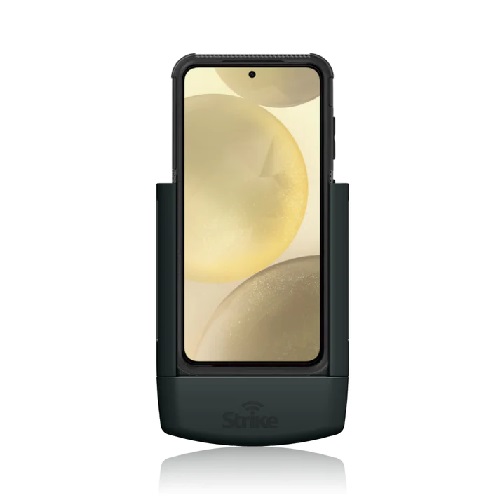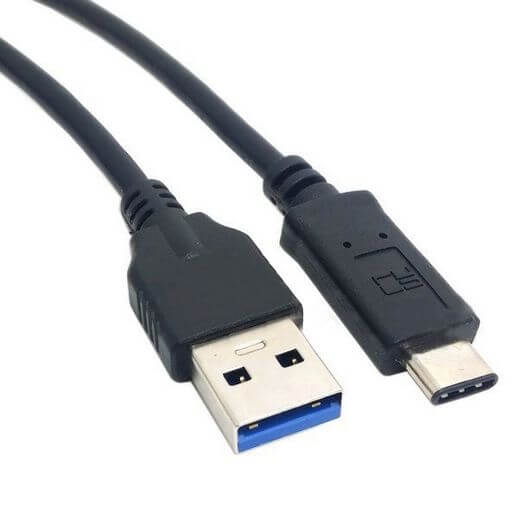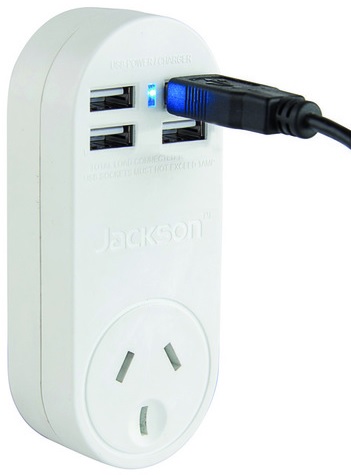

Mobile Phone Chargers. Buy A Quality Phone Charger
We have phone chargers (wall, car, usb, wireless chargers, charging hubs and charging cables) for almost any mobile phone or device. Choose from our range of mains chargers, car chargers, wireless chargers, powerbanks, portable phone chargers and even more chargers.
Phone Chargers
Mobile Phone Chargers: Different Charger Types
Here at Campad Electronics, we offer a diverse selection of phone chargers that cater to a variety of charging needs. Our range includes wall phone chargers, car mobile phone chargers, desktop charging hubs, wireless charging stands, and chargers that are compatible with iPhones and all mobile phones and devices.
For those who need a reliable charger on-the-go, we have car mobile phone chargers that can quickly and efficiently charge your device while you're driving. If you prefer to charge your phone at home or in the office, we have wall phone chargers that can plug into any standard power outlet.
For folks who have multiple devices that need charging at once, we offer desktop charging hubs that can charge multiple devices simultaneously, making it a great option for families or small offices.
Wireless charging stands are also available for those who want a convenient and hassle-free charging experience. Simply place your phone on the stand and watch as it charges wirelessly without any cords or cables.
No matter what type of device you have, we have a charger that can accommodate your needs. Our chargers are designed to work with all mobile phones and devices, including iPhones, so you can charge all your devices with ease.
Phone chargers work using an inbuilt switch mode power supply (SMPS). This consist of a high frequency transformer, a full-wave rectifier, a high frequency switch and its control mechanisms as well as filters. Below is a list of the different USB cable types and their uses and applications as well as an overview of different chargers that are commonly used in phones, tablets and other devices.

USB Mobile Phone Chargers:
Normally, USB chargers or power adapters come in a range of inputs and are normally labeled and certified for 100 to 240 volts, either 50Hz or 60Hz. Phones typically only need 5 Watts while the larger devices need the higher power adaptors to charge. In Apple devices, the power adapters have an output of 5VDC at 1Amp (5 Watts) or 5.1VDC at 2.1 Amps (10 Watts) and sometimes higher depending on the device.
Micro USB Mobile Phone Chargers:
Micro USB chargers have a similar width to that of Mini-USB, but approximately half the thickness, enabling their integration into thinner portable devices for improved phone charging.
The thinner Micro-USB connector were introduced in order to replace the Mini-USB chargers including smartphones, personal digital assistants, and cameras. It design is rated for at least 10,000 connect-disconnect cycles, which is more than the Mini-USB charger design.
USB Type-C (USB C) Mobile Phone Chargers:
After being finalized in August 2014, it defines a new small reversible-plug connector for USB devices. The USB-C chargers (also known as USB Type C C or USB C chargers) connects to both hosts and devices, replacing various Type-A and Type-B connectors and cables with a standard meant to be future-proof.
These cables are electronically marked cables that contain a full set of wires and a chip with an ID function based on the configuration data channel and vendor-defined messages from the USB Power Delivery 2.0 specification.
Mini USB Mobile Phone Chargers:
Mini-USB chargers were first introduced for smaller devices such as digital cameras, smartphones and tablet computers. It was introduced in April 2000 along with USB 2.0.
These phone chargers are smaller than regular USB and is still used in some cameras that require non-standard connectors for their mobile charging.
Apple iPhone Lightning Chargers
Apple iPhone chargers are proprietary computer busses and power connectors. Apple Inc. created lightning chargers on 12th of September in order to replace its predecessor. The Lightning connector is used to connect Apple mobile devices like iPhones, iPads and iPods to host computers, external monitors, cameras, USB battery chargers, etc. It is more compact than the 30-pin dock connector and can be inserted with either side facing upwards.
Apple 30-Pin Chargers
The Apple 30-pin device chargers were common to most Apple mobile devices such as iPhone (1st generation, iPhone 3G, iPhone 3GS, iPhone 4, iPhone 4S and many more until the lightning connector was released in late 2012. As the Apple devices changed, so did the signals in the dock connector.
Wireless Mobile Phone Chargers:
Wireless chargers use an electromagnetic field to transfer energy between two objects through electromagnetic induction by the help of a charging station. An induction coil is used to create an alternating electromagnetic field from within a charging base, and a second induction coil present in the portable devices take the power from the electromagnetic field and converts it back into electric current to change the battery. Wireless charging is more convenient and easier compared to other methods of charging devices.
Mobile Phone Chargers: Quality
Phone chargers of high quality are extremely important. There have been reports of injuries caused by malfunctions of genuine batteries or wall chargers. The causes are poor quality, uncertified or counterfeit battery or charger
Fake batteries and chargers are often supplied in the black market phones and are sold as after-market products. They are usually found on auction websites or in unregistered stores and market usually sell it at low rates. Australian Consumer Law specifies that only certain charger certifications are valid for local sockets.
Mobile Phone Chargers: Quick Charge 3.0
Quick Charge 3.0 is a fast charging technology. It allows high levels of current to flow to the battery and maximizes its charging efficiency. These products also charge their batteries at high voltages which allows higher rate of power transfer through commonly found cables.
In order for it to work, both the phone and the charger must be compatible with the same charging voltages and current. The device should support 9V/2A for the process to take place in a short period of time.
Mobile Phone Chargers: Working Principle
They work on a simple principle where AC is converted to DC. There are 3 main components of phone chargers. The three main components are step-down transformer, rectifier (full wave bridge rectifier) and voltage regulator.
Mobile Phone Chargers: Australian Safety Standards
Battery and charger safety is a major issue among all mobile phone users. Instead of buying cheap chargers and batteries, you should buy quality batteries and chargers. Awareness about avoiding counterfeit products is also important. Similarly, all devices should be carefully handled and charged.
There are also situations where genuine products have malfunctioned however, this is extremely rare. In Australia at the time of writing there had't been any cases of serious injuries cause by batteries of mobile phones overheating. No records of fire caused by genuine mobile phone chargers are present with the fire authorities.
Counterfeit or fake chargers are a safety hazard to us as well as a hazard to phones. An 'Apple' charger that costs $2 can't be a duplicate of a real Apple charger internally. Such chargers are of very bad quality. The people who manufacture these chargers completely ignore all safety standards. There's a big risk if a charger doesn't have proper insulation. In order to avoid these circumstances, you should pay a few more dollars for an Australian safety standards certified charger especially as you'll be connecting it to a smartphone worth several thousand dollars.
Mobile Phone Charger References
Phone Chargers
1. https://community.ricksteves.com/travel-forum/tech-tips/usb-charger-question2. https://www.extremetech.com/computing/115251-how-usb-charging-works-or-how-to-avoid-blowing-up-your-smartphone
3. http://www.makeuseof.com/tag/understanding-usb-cable-types-one-use/
4. http://www.androidauthority.com/wireless-charging-qi-pad-technology-580015/
5. http://www.mobilefun.co.uk/blog/wireless-charging-guide/
6. https://www.gizmodo.com.au/2014/06/please-dont-buy-cheap-phone-chargers-and-cables/
7. https://www.quora.com/How-does-a-mobile-charger-work-What-are-its-components
8. http://www.belkin.com/au/Resource-Center/power-delivery/
Mobile Phone Chargers
Mobile phones mobile phones have become an essential part of our daily lives. With the constant need to stay connected, mobile phone chargers have become a crucial accessory for phone users. A phone charger is a device that supplies electric energy to a mobile phone, allowing it to function. We will explore the range of Campad Electronics' mobile phone chargers, including their types, features, and benefits
.Types of Mobile Phone Chargers
There are several types of mobile phone chargers available in the market, catering to different needs and preferences. Some of the most common types of phone chargers include:
- Wall Chargers: These are the most common type of phone chargers, which can be plugged into a wall outlet to charge a mobile phone.
- Car Chargers: These chargers are designed for use in vehicles and can be plugged into the car's cigarette lighter socket.
- Portable Chargers: These mobile chargers are battery-powered and can be carried around to charge a mobile phone on the go.
- Wireless Chargers: These chargers use electromagnetic fields to charge a mobile phone without the need for a cable.
Features of Mobile Phone Chargers
When it comes to choosing a phone charger, there are several features to consider. Some of the key features of mobile phone chargers include:
- Speed: Look for a charger that can charge your phone quickly, such as a fast charger or a quick charger.
- Compatibility: Ensure that the charger is compatible with your phone's make and model.
- Safety: Choose a charger that has built-in safety features, such as overcharge protection and short-circuit protection.
- Portability: Consider a charger that is compact and lightweight, making it easy to carry around.
Benefits of Using a Campad Electronics Phone Charger
Using a Campad Electronics phone charger can have several benefits, including:
- Convenience: A phone charger allows you to charge your phone anywhere, anytime.
- Cost-Effective: A phone charger can help extend the life of your phone's battery, reducing the need for frequent replacements.
- Environmentally Friendly: Using a phone charger can help reduce electronic waste by minimizing the need for disposable batteries.
Mobile Phones and Campad Electronics Chargers: A Perfect Combination
A phone charger is an essential accessory for any mobile phone user. With the wide range of mobile phones available in the market, it's essential to choose a charger that is compatible with your phone's make and model. All mobile phones require a charger this includes charger phone:
- Smartphones: These phones require a charger to function and can be charged using a wall charger, car charger, or portable charger.
- Feature Phones: These phones also require a charger to function and can be charged using a wall charger or car charger.
Mobile Phone Chargers Summary
Mobile phone chargers are an essential accessory for phone users. With the wide range of chargers available in the market, it's essential to choose a charger that meets your needs and preferences. By considering the types, features, and benefits of phone chargers, you can ensure that your phone stays charged and ready to use. Whether you're looking for a wall charger, car charger, or portable charger, there's a phone charger out here that's perfect for you and your mobile phone.
When Buying for A Phone Charger What Should You Look At?
When it comes to choosing a phone charger, it's essential to find the one that meets your specific needs. Simply picking any charger off the shelf is not enough; you need to consider several key factors to ensure you get the right one.
Key Phone Charger Considerations
- Device Compatibility: Check the charger is compatible with your mobile phone or portable device, whether it's a Samsung Galaxy, an iPhone or any other smartphone.
- Cable Length: Think abut the length of the charging cable and how it will affect your convenience.
- Charging Speed: If you need speedy charging, look for chargers marked as quick charge or fast charger.
- Port Type: Choose a charger with the correct port type, such as Micro USB, USB-C or Lightning, to match your phone's charger port.
- Brand and Quality: Opt for reputable brands, such as Belkin, Cygnett, Otterbox, USP, Simplecom and Mophie also check for quality certifications to ensure safety and reliability.
- Portability: If you're often on the move, a compact and lightweight charger or a portable power bank might be the ideal choice.
- Durability: A powerful charger with a strong cable can withstand wear and tear better, making it a worthwhile investment.
Does It Really Matter Which Charger I Use for My Phone?
Using the right charger for your phone ensures a faster charge as well as the safety and longevity of your phone. iPhone 16 chargers use USB-C cables, making them compatible with iPhone 15 and most Android phones, while older iPhones and iPads require lightning chargers and cables. If you're unsure about the type of charger you need, please don't hesitate to get in touch. Our friendly customer service team will be more than happy to help you find the best phone charger for you and your phone.
Mobile Phone Chargers: A Necessity
Mobile phones have become an integral part of our daily lives, and mobile chargers are a must-have accessory for phone users. With the increasing use of mobile phones, mobile chargers have become a necessity to keep our phones charged throughout the day. A phone charger is an essential item that every phone user needs to have, whether it's a phone charger for a single phone or multiple phone chargers for multiple phones. Mobile phone chargers are designed to charge mobile phones quickly and efficiently, making them a vital accessory for people who are always on the go. Phone chargers come in different types, including wall chargers, car chargers, and portable chargers, making it easy for users to charge their phones anywhere, anytime. Mobile chargers are compatible with various mobile phones, including Android phones and iPhones, making them a versatile accessory for phone users. With the advancement in technology, phone chargers have become more efficient and faster, allowing users to charge their phones quickly and easily. Chargers for mobile phones are widely available in the market, and users can choose from a variety of phone chargers that suit their needs and preferences.
Click here to go back to our home page.









